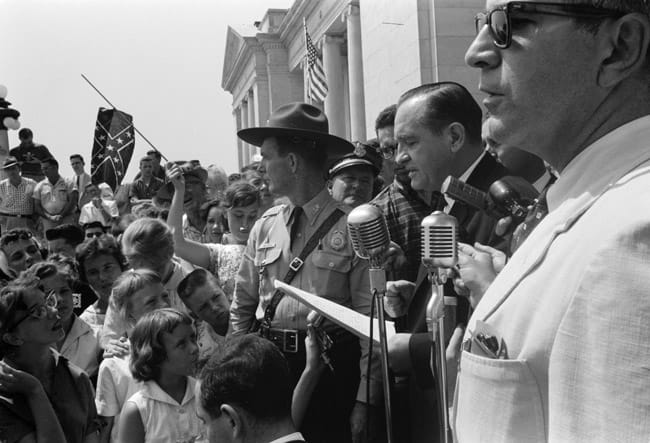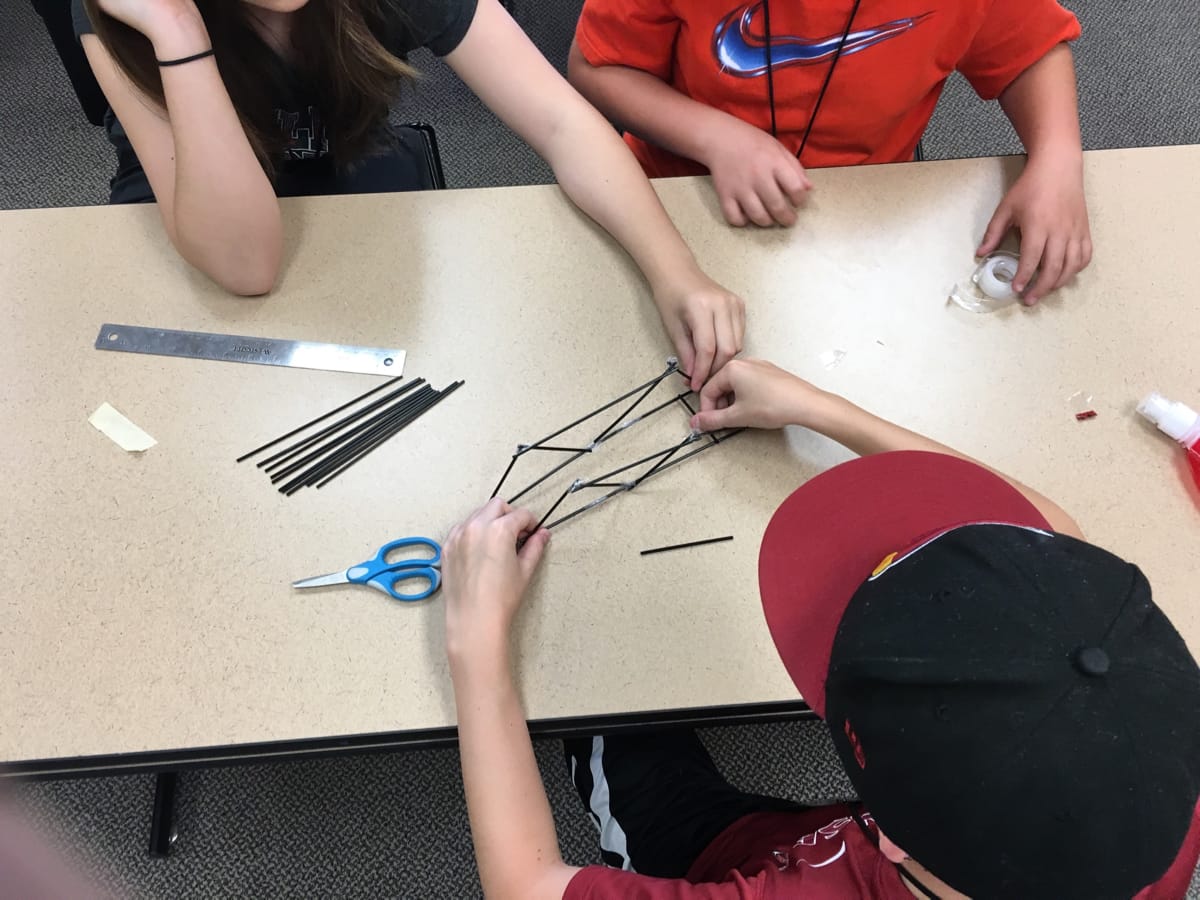

Uh oh...
It appears that you're using a severely outdated version of Safari on Windows. Many features won't work correctly, and functionality can't be guaranteed. Please try viewing this website in Edge, Mozilla, Chrome, or another modern browser. Sorry for any inconvenience this may have caused!
Read More about this safari issue.

In a room full of storytellers, editors and dignitaries, the only things that indicated a decade had passed were the heads of gray (or missing) hair, 10 years worth of statistics flashing by on a movie screen and a large cake marking the celebration.
Otherwise, it was just your run-of-the-mill gathering of history, media and tech nerds – the people I used to hang with on the regular.
How could a decade have passed since the Encyclopedia of Arkansas History & Culture played such a huge part in my daily life?

Of all the freelance editing I’ve done in my journalism career, the web-based Encyclopedia of Arkansas was the most fun. From day to day, I never knew what interesting, fun or shocking tidbit I was going to discover about my adopted home state.
I edited a few hundred of the encyclopedia’s initial entries (the online resource launched in May 2006 with about 700 entries; today it boasts 4,400, plus more than 6,000 other pieces of media), and with each piece I learned something notable.
A few of the more memorable somethings:
- Two of the Rolling Stones were arrested in Fordyce in 1975, after a Fourth of July concert in Memphis the previous day. The event apparently was so memorable for guitarist Keith Richards that he “opened his 2010 memoir, Life, by recalling his arrest in Fordyce,” according to the encyclopedia entry.
- About 40 families (most of them Arkansans) – on their way to California in 1857 in search of a better life – were slaughtered in southern Utah in what became known as the Mountain Meadows Massacre. I don’t remember learning about this in school, but it has stuck with me since my Encyclopedia of Arkansas days. One theory holds Mormon founder Brigham Young responsible for the massacre.
- As a student at Clinton High School, Sue Kidd pitched so well that she was allowed to play on the high school boys baseball team in 1949. She’s best known in Van Buren County for a game she pitched and won at age 15. That year, she joined the All-American Girls Professional Baseball League (made newly famous in the 1992 movie A League of Their Own, starring Geena Davis and Tom Hanks; Kidd had a bit part).
Rowdy rock stars, Mormon massacres, baseball-pitching girls … not much in common on the surface, but they’re all part of the fabric of the Natural State’s grand history, and the Encyclopedia of Arkansas stitches the pieces together.
It all started with a thread woven by founding editor Tom Dillard, then curator of the Butler Center for Arkansas Studies (part of the Central Arkansas Library System), with help from deputy curator Tim Nutt, project manager Jill Curran and senior editor Nathania Sawyer. They set out to create a solid, reliable reference work that would chronicle all things Arkansas.
The EOA is unique, said David Stricklin, head of the Butler Center, in that it’s the only state encyclopedia hosted by a public library system. (Most are hosted by state humanities councils and universities.) And folks from other states looking to start one, he said, call editor Guy Lancaster “just about every week and say, ‘We want to do like y’all are doing in Arkansas.’ ”
Lancaster, who was an intern in the early days, heads a small staff consisting of assistant editor Ali Welky, editorial assistant Jasmine Jobe, historian Michael Polston and media editor Michael Keckhaver.

Photo courtesy of Encyclopedia of Arkansas History & Culture: At its 10th anniversary celebration in May, the Encyclopedia of Arkansas staff celebrates its first decade of existence. From left: Ali Welky, Guy Lancaster, Jasmine Jobe, Michael Polston and Michael Keckhaver.
I asked Lancaster a few questions about the past, present and future of the encyclopedia:
What are some of the more memorable moments in your history with the EOA?
“We had a gentleman show up at our office wanting us to correct the record about Central High. According to him, the desegregation of Central High [in Little Rock] happened in 1947, not 1957, but the media later changed all the dates. Also, the Little Rock Nine weren’t actually harassed upon their entrance into the high school. No, according to this man, they had all their friends come and pretend to shout at them for the benefit of the cameras. He was adamant that we needed to present the ‘truth’ of the matter and later wrote us a letter offering us $100 if we could correct the date on our entry to 1947.”
“Another exciting moment occurred when our media editor, Michael Keckhaver, received a phone call from a woman who had some previously unseen images relating to the Elaine Massacre. She had an ancestor who was with the Red Cross and had taken many photographs of soldiers down there in Phillips County and wanted to share them with us. So we were the first ones to offer images like this [below] to the wider public. As folks who work in the field of history, we were very excited about that.”

Rally at the Arkansas State Capitol protesting the admission of the Little Rock Nine to Central High School; 1957
Courtesy of Library of Congress Prints and Photographs Division
How do you ensure that the entries feature the latest info – for instance, if someone dies or you discover new information about the subject of an entry?
“I subscribe to a lot of RSS feeds relating to Arkansas news, and my staff historian and I regularly go through newspapers. If someone dies, a town gets struck by a tornado, a historic structure burns down, etc., we try to update the entry as soon as possible. However, sometimes information flies below our radar. For example, late last year, David Gordon Green, an Arkansas-born film director, released a new movie, Manglehorn, that was barely a blip at the box office (despite starring Al Pacino), and I didn’t hit upon news of it until sometime afterward. We currently have more than 4,400 entries, hundreds of which are on small communities that don’t always register in state news. Therefore, on occasion, the staff and I will take a break from processing new material and look through our living subjects and town entries to see if anything needs updating. That’s going to become more important as we add more and more entries, but so it goes.”
In what ways has technology changed how the encyclopedia operates?
“For one, advances in technology are making it easier to access information about Arkansas history. Sites that offer access to digitized newspapers, like Chronicling America or Newspapers.com, are making it easier to get reports about Arkansas that showed up in state and national newspapers. This makes it easier for our staff historian to fact check entries, for one, but it also makes it easier for readers to hit upon stories that have been relatively forgotten but should certainly be included in the Encyclopedia of Arkansas.
“However, I think that the greatest change in our operations is our pursuit of more and more local history. This may not sound like a reaction to changing technologies, but in some respects, it is. The absolute proliferation of information online is a challenge, and if you are searching for something on national figures like Bill Clinton or Johnny Cash, we probably won’t show up on the first page of Google results, and students probably still have a tendency to consult Wikipedia before us, at least for such big names as these. However, when it comes to the local history, there is no better site than the Encyclopedia of Arkansas. Just check out this massive list of Civil War events that happened in the state. Or when it comes to Civil Rights, no other place has, for example, good information on the Hot Springs-based Council for the Liberation of Blacks. We stand out from other online resources when we can offer these kinds of local stories.”
What do you foresee for the next 10 years?
“I honestly don’t know. Ten years ago, we never foresaw that we would all be working at the same furious pace processing new material. We figured that contributions would eventually taper off and that the EOA would go into maintenance mode, being kept up to date by a smaller staff, with new entries added only on occasion. However, we are adding entries every week. Last year, we added 402 new entries, and we’ll probably add even more this year. I can easily imagine us going at the same pace for another 10 years, but I honestly haven’t had much time to think deeply about the future.”
WHAT’S NEXT?
At the anniversary reception, Stricklin announced a few exciting developments:
- A partnership with the Arkansas Department of Parks and Tourism.
- The now-permanent status of the Tom W. Dillard EOA Endowment.
- The Arkansas Time Traveler app, to debut in 2017. In Lancaster’s words, “The app will offer the user images (even video) and information from the EOA relating to historical events that occurred in the vicinity of the user’s locale.”
Click here for a three-minute demonstration of Arkansas Time Traveler on YouTube.
Go ahead; we’ll wait. But you’d better hurry back before the cake’s all gone.
Join the Conversation
Leave a Comment
One response to “This is Not your Grandfather’s Encyclopedia”
 Leave a Reply
Leave a Reply
We do the work.
You check your email.
Sign up for our weekly e-news.
Get stories sent straight to your inbox!







 Leave a Reply
Leave a Reply
[…] for the Union. When it comes to these historic matters, the Encyclopedia of Arkansas is a laudable trove of information. One entry on recruitment approximates 60,000 men served in the Confederate military […]